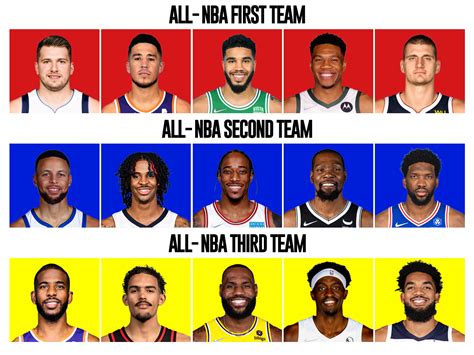
Julius Erving, the legendary “Dr. J,” has unveiled his dream NBA starting five, a lineup he believes would be virtually unbeatable, featuring an array of basketball titans.
Philadelphia 76ers icon Julius Erving, better known as Dr. J, recently revealed his all-time NBA starting five, a selection that has ignited passionate debate among basketball fans and analysts alike. Erving’s choices, revealed in a recent interview, reflect his deep understanding and appreciation for the game’s history and its most dominant players. His lineup consists of Oscar Robertson, Michael Jordan, Elgin Baylor, Karl Malone, and Bill Russell. Erving confidently asserts that this quintet, if assembled in their prime, would be virtually unstoppable.
Erving’s selection process underscores a blend of historical impact, individual brilliance, and positional balance. Each player in his dream team represents a distinct era and embodies unique skill sets that, when combined, create a formidable force on both ends of the court. From the all-around brilliance of Oscar Robertson to the unparalleled scoring prowess of Michael Jordan, Erving’s lineup is a testament to the rich tapestry of NBA talent.
The Backcourt: A Symphony of Skill and Scoring
Erving’s backcourt pairing of Oscar Robertson and Michael Jordan immediately establishes a dynamic blend of playmaking, scoring, and defensive intensity.
-
Oscar Robertson: Known as the “Big O,” Robertson was a pioneer of the triple-double and an all-around force during his tenure with the Cincinnati Royals and Milwaukee Bucks. “Oscar can do everything,” Erving stated, emphasizing Robertson’s versatility and court vision. Robertson’s ability to score, rebound, and distribute the ball at an elite level makes him the ideal point guard for Erving’s dream team, capable of orchestrating the offense and involving all his teammates. His impressive career averages of 25.7 points, 9.5 assists, and 7.5 rebounds per game highlight his all-encompassing impact on the game.
-
Michael Jordan: Widely regarded as the greatest basketball player of all time, Michael Jordan brings an unmatched scoring ability and competitive drive to Erving’s lineup. Jordan’s accolades, including six NBA championships, five MVP awards, and ten scoring titles, speak volumes about his dominance. “Michael is just Michael,” Erving said, acknowledging Jordan’s unparalleled impact on the game. Jordan’s relentless pursuit of perfection and his ability to elevate his game in the most crucial moments make him the ultimate closer and a constant threat on both ends of the court. His career average of 30.1 points per game is the highest in NBA history.
The Frontcourt: Power, Versatility, and Dominance
Erving’s frontcourt selections of Elgin Baylor, Karl Malone, and Bill Russell provide a mix of scoring, rebounding, and defensive prowess that would overwhelm opponents.
-
Elgin Baylor: A high-flying forward with the Los Angeles Lakers, Elgin Baylor was known for his incredible athleticism and scoring ability. Baylor averaged 27.4 points and 13.5 rebounds over his career, showcasing his versatility and dominance on both ends of the court. His ability to create scoring opportunities and his tenacity on the boards make him a valuable asset to Erving’s dream team. While he never won an NBA championship, Baylor’s impact on the game is undeniable, and his inclusion in Erving’s lineup reflects his status as one of the game’s all-time greats.
-
Karl Malone: “The Mailman,” Karl Malone, was a consistent scoring machine for the Utah Jazz, known for his physicality and relentless work ethic. Malone’s career spanned nearly two decades, during which he amassed numerous accolades, including two MVP awards and 14 All-Star selections. His career scoring average of 25.0 points per game and his durability made him a constant threat to opponents. Malone’s presence in Erving’s lineup provides a reliable scoring option and a physical presence in the paint.
-
Bill Russell: A defensive anchor and a true leader, Bill Russell was the cornerstone of the Boston Celtics dynasty, winning 11 NBA championships in 13 seasons. Russell’s impact on the game extended beyond statistics; his leadership, defensive prowess, and ability to elevate his teammates made him one of the most influential players in NBA history. “Bill is a winner,” Erving noted, underscoring Russell’s unparalleled success and his ability to lead his teams to victory. Russell’s career average of 15.1 points and 22.5 rebounds per game highlights his dominance on the boards and his defensive impact.
Analyzing Dr. J’s Dream Team
Erving’s selection is notable for its emphasis on versatility, scoring, and defensive prowess. The combination of Robertson’s all-around game, Jordan’s scoring dominance, Baylor’s athleticism, Malone’s physicality, and Russell’s defensive leadership creates a balanced and formidable lineup.
- Offensive Firepower: The scoring potential of this lineup is immense. Jordan and Malone are two of the highest scorers in NBA history, while Robertson and Baylor were prolific scorers in their own right. This offensive firepower would make it incredibly difficult for any team to contain them.
- Defensive Prowess: Russell’s defensive presence in the paint is legendary, and his ability to protect the rim and control the boards would be a major asset. Jordan and Robertson were also excellent defenders, capable of disrupting opposing offenses and creating turnovers.
- Versatility and Adaptability: Each player in this lineup is capable of playing multiple positions and adapting to different game situations. This versatility would allow Erving’s dream team to adjust their strategy on the fly and exploit any weaknesses in their opponents.
- Leadership and Intangibles: Russell’s leadership and winning mentality are invaluable, and his ability to inspire his teammates would be a key factor in their success. Jordan’s competitive drive and Malone’s work ethic would also contribute to the team’s overall intensity and focus.
Potential Challenges and Counterarguments
While Erving’s dream team is undoubtedly impressive, it is not without its potential challenges and counterarguments.
- Era Differences: Comparing players from different eras is always difficult, as the game has evolved significantly over time. The rules, pace of play, and athleticism of players have all changed, making it challenging to accurately assess how players from different generations would match up against each other.
- Style of Play: While the players in Erving’s lineup are all incredibly talented, their individual styles of play may not always mesh perfectly. Integrating five superstars into a cohesive team requires careful management and a willingness to sacrifice individual statistics for the good of the team.
- Lack of Outside Shooting: While Jordan was a capable outside shooter, the other players in Erving’s lineup were not known for their three-point shooting prowess. In today’s NBA, where the three-point shot is a crucial part of the game, this lack of outside shooting could be a disadvantage.
- Other Contenders: There are countless other players who could have been included in Erving’s dream team, and many fans and analysts would have different opinions on who the best five players of all time are. Legends like Kareem Abdul-Jabbar, LeBron James, Larry Bird, and Magic Johnson are often mentioned in the conversation, and their exclusion from Erving’s lineup is sure to spark debate.
Reactions and Implications
Erving’s dream team selection has generated widespread reactions and discussions among basketball fans and analysts. Many have praised his choices, while others have questioned his omissions and offered alternative lineups.
- Fan Engagement: The debate over Erving’s dream team has sparked countless conversations on social media, forums, and sports talk shows. Fans are eager to share their own opinions and argue for their favorite players.
- Historical Context: Erving’s selections provide a valuable perspective on the history of the NBA and the evolution of the game. By highlighting players from different eras, he reminds us of the rich tapestry of talent that has shaped the league.
- Legacy and Impact: The inclusion of players like Robertson, Baylor, and Russell underscores their enduring legacy and impact on the game. These legends paved the way for future generations of players and continue to inspire fans and athletes alike.
- Subjectivity and Debate: Ultimately, the selection of an all-time dream team is a subjective exercise, and there is no definitive answer. Erving’s choices reflect his personal preferences and his understanding of the game, and they are sure to spark debate and discussion for years to come.
Detailed Player Profiles
To further understand Erving’s choices, let’s delve into detailed profiles of each player, highlighting their strengths, accomplishments, and impact on the game.
-
Oscar Robertson:
- Career Highlights: NBA champion (1971), MVP (1964), 12-time All-Star, 11-time All-NBA selection, Rookie of the Year (1961).
- Key Strengths: Exceptional all-around player, unparalleled court vision, scoring ability, rebounding, playmaking, leadership.
- Impact: Broke barriers for future generations of players, revolutionized the point guard position, set the standard for versatility and all-around excellence.
- Quote: “Oscar can do everything,” – Julius Erving.
- Stats: 25.7 points, 9.5 assists, 7.5 rebounds per game.
-
Michael Jordan:
- Career Highlights: Six-time NBA champion, six-time Finals MVP, five-time MVP, 14-time All-Star, 10-time scoring champion, Defensive Player of the Year (1988).
- Key Strengths: Unparalleled scoring ability, competitive drive, athleticism, defensive prowess, clutch performance.
- Impact: Transcended the game, became a global icon, inspired millions with his work ethic and determination, set the standard for excellence in basketball.
- Quote: “Michael is just Michael,” – Julius Erving.
- Stats: 30.1 points, 6.2 rebounds, 5.3 assists per game.
-
Elgin Baylor:
- Career Highlights: 11-time All-Star, 10-time All-NBA selection, Rookie of the Year (1959).
- Key Strengths: Incredible athleticism, scoring ability, rebounding, versatility, leadership.
- Impact: Revolutionized the forward position, inspired future generations of high-flying athletes, set the standard for versatility and scoring prowess.
- Stats: 27.4 points, 13.5 rebounds, 4.3 assists per game.
-
Karl Malone:
- Career Highlights: Two-time MVP, 14-time All-Star, 11-time All-NBA selection, two-time Olympic gold medalist.
- Key Strengths: Consistent scoring, physicality, work ethic, durability, rebounding.
- Impact: One of the most prolific scorers in NBA history, set the standard for longevity and consistency, inspired future generations of power forwards.
- Stats: 25.0 points, 10.1 rebounds, 3.6 assists per game.
-
Bill Russell:
- Career Highlights: 11-time NBA champion, five-time MVP, 12-time All-Star, four-time rebounding champion.
- Key Strengths: Defensive prowess, leadership, rebounding, shot-blocking, team play.
- Impact: Transformed the center position, redefined the importance of defense, set the standard for leadership and team play, one of the greatest winners in sports history.
- Quote: “Bill is a winner,” – Julius Erving.
- Stats: 15.1 points, 22.5 rebounds, 4.3 assists per game.
Alternative Dream Team Lineups and Perspectives
While Erving’s dream team is compelling, it is important to consider alternative lineups and perspectives. Many other legendary players could have been included, and different criteria could lead to different selections.
- Kareem Abdul-Jabbar: The NBA’s all-time leading scorer, Abdul-Jabbar was a dominant center with an unstoppable skyhook shot. His inclusion would provide Erving’s dream team with even more offensive firepower and a dominant presence in the paint.
- LeBron James: A four-time MVP and four-time NBA champion, James is one of the most versatile and dominant players in NBA history. His inclusion would add playmaking, scoring, and defensive versatility to Erving’s lineup.
- Larry Bird: A three-time NBA champion and three-time MVP, Bird was known for his exceptional shooting, passing, and basketball IQ. His inclusion would provide Erving’s dream team with more outside shooting and a brilliant playmaker.
- Magic Johnson: A five-time NBA champion and three-time MVP, Johnson was a revolutionary point guard with exceptional passing and court vision. His inclusion would add even more playmaking and excitement to Erving’s lineup.
The debate over the greatest players of all time is a never-ending one, and there is no definitive answer. However, by considering different perspectives and alternative lineups, we can gain a deeper appreciation for the rich history of the NBA and the incredible talent that has graced the game.
The Enduring Appeal of Dream Team Debates
The fascination with dream team debates stems from several factors:
- Nostalgia: These discussions allow fans to reminisce about their favorite players and eras, reliving cherished memories and moments of brilliance.
- Historical Appreciation: Dream team debates encourage a deeper understanding of NBA history, prompting fans to learn more about the legends of the game and their accomplishments.
- Subjectivity and Personal Preference: The absence of a definitive answer makes these debates endlessly engaging, as fans can champion their favorite players and argue for their inclusion based on personal preferences and subjective criteria.
- Hypothetical Scenarios: The hypothetical nature of dream team matchups allows fans to imagine how different players and eras would stack up against each other, creating endless possibilities and scenarios.
In conclusion, Julius Erving’s all-time NBA starting five is a thought-provoking and compelling selection that reflects his deep understanding and appreciation for the game. While his choices are sure to spark debate and discussion, they also serve as a reminder of the incredible talent and rich history of the NBA. Whether you agree with his selections or not, Erving’s dream team provides a valuable perspective on the greatest players of all time and their enduring impact on the game. The discussion surrounding the dream team also highlights the constant evolution of the game, from the era of dominant big men to the modern era of versatile wings and three-point specialists. It’s a conversation that will likely continue for generations to come. Ultimately, the beauty of the NBA lies in its diversity of talent, its rich history, and its ability to inspire passionate debate among fans and analysts alike.
Frequently Asked Questions (FAQ)
-
Why did Dr. J choose Oscar Robertson over other legendary point guards like Magic Johnson or Stephen Curry?
Dr. J highlighted Robertson’s all-around ability and versatility. While Magic Johnson and Stephen Curry are exceptional players, Robertson’s unique combination of scoring, rebounding, and playmaking from the point guard position, especially considering the era he played in, made him Erving’s choice. Erving valued Robertson’s ability to “do everything” on the court, suggesting he prioritizes a complete player who could impact all facets of the game. It’s also a reflection of Erving’s experience playing against and appreciating Robertson’s game firsthand.
-
How does this lineup compare to other all-time dream teams that have been suggested by other players or analysts?
This lineup emphasizes a balance of scoring, defense, and versatility. Other dream teams often prioritize different aspects, such as pure scoring or modern-era three-point shooting. For example, some might favor a lineup with LeBron James, Steph Curry, and Shaquille O’Neal, highlighting modern dominance. Erving’s lineup leans towards historical impact and all-around greatness, placing less emphasis on the specific demands of the modern game. The absence of modern dominant 3-point shooters is a major differentiating factor.
-
What potential weaknesses might this dream team have against a more modern, three-point oriented lineup?
The primary weakness would be a relative lack of consistent three-point shooting compared to modern NBA teams. While Michael Jordan was a capable shooter, the other players in the lineup were not known for their three-point prowess. This could make it difficult to space the floor and create open looks against a team that prioritizes three-point shooting. However, their defensive prowess and mid-range game might mitigate this weakness to some extent, particularly given rule differences between eras.
-
How would Bill Russell’s defensive impact translate to the modern NBA given the rule changes and increased emphasis on offensive freedom?
While the game has changed significantly, Bill Russell’s defensive instincts, shot-blocking ability, and leadership would still be valuable in the modern NBA. However, he would need to adjust to the increased emphasis on perimeter play and the rules against hand-checking. His ability to switch onto smaller players and protect the rim would be crucial. The biggest adjustment would be adapting to the spacing and pace of the modern game, requiring quicker rotations and a greater emphasis on perimeter defense, things he wasn’t necessarily known for in his era.
-
Why Elgin Baylor over other legendary forwards like Larry Bird or LeBron James?
Erving’s choice of Elgin Baylor suggests an appreciation for Baylor’s pioneering athleticism and scoring ability at the forward position. While Bird and James are considered by many to be superior overall players, Baylor’s impact on the game during his era and his spectacular athleticism may have resonated more with Erving. It could also reflect a personal preference for Baylor’s style of play or a recognition of his historical significance as a revolutionary forward. Also, considering Dr. J also revolutionized the forward position with his aerial acrobatics, he might see some similarities with Baylor’s style of play.









